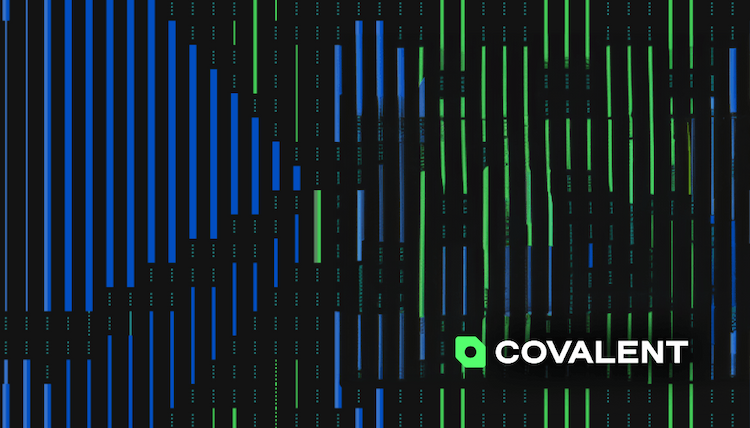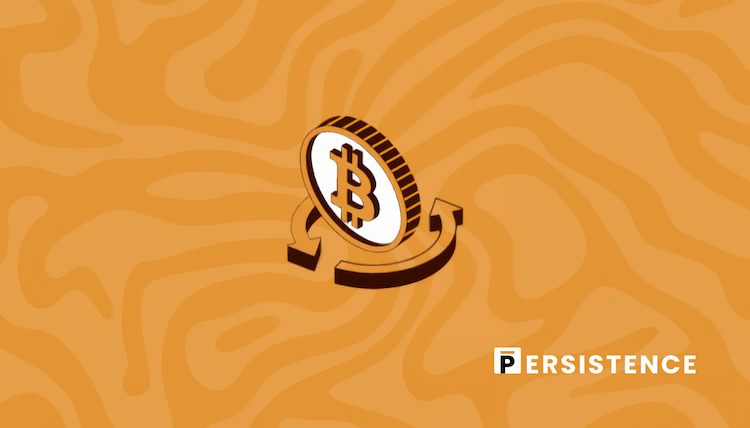
In today’s Web3 landscape, cross-chain interoperability has significantly become a critical priority for startups, as Bitcoin recently surpassed the $100K milestone. This achievement has heightened the urgency of addressing Bitcoin’s interoperability and scalability challenges. While Bitcoin is revered as a leading digital store of value, its limited utility remains a concern for developers and maximalists.
Many Bitcoin users still rely on custodial platforms for trading, lending, and staking, which exposes them to custody risks and privacy issues. These limitations have hindered Bitcoin’s growth within the DeFi ecosystem, leaving it behind more dynamic innovations on platforms like Ethereum and Solana.
Portal to Bitcoin seeks to overcome these obstacles with its Truly Custody Less Cross-Chain protocol. This solution enables native Bitcoin swaps across blockchains without requiring wrapped tokens, multi-signature vaults, or custodial bridges. Leveraging advanced tools like Portal OS and Bitscaler, the project enhances Bitcoin’s scalability and utility while maintaining its existing Opcodes. By offering a seamless and secure cross-chain experience, Portal to Bitcoin aims to broaden cryptocurrency adoption and pave the way for onboarding the next billion users into the Bitcoin and Web3 ecosystems.

This month’s review takes a closer look at Portal, featuring its recent Aurelia testnet launch, a comprehensive overview of its products, insights into the team, fundraising details, and more. The review wraps up with an in-depth project analysis, evaluating its key strengths and addressing potential challenges.
What is Portal: Infrastructure and Products
Portal is building a custody-less cross-chain infrastructure for Bitcoin, addressing the inherent security risks of centralized exchanges, bridges, and multi-signature custody solutions. By eliminating these vulnerabilities, Portal seeks to enhance Bitcoin’s role in DeFi, attract institutional capital, and appeal to Bitcoin whales. Its infrastructure is designed for seamless interoperability with major blockchains like Ethereum, Solana, and Bitcoin’s Layer 2 networks, fostering a highly integrated and accessible ecosystem.
Portal’s mission centers around key goals:
- Decentralization
- Hyperbitcoinization
- Cross-chain and Cross-Layer Integration
- Utility-Driven Products
- Seamless Composability
- Sustainable Value Capture
Portal has developed two key infrastructure components to achieve these aims: Portal OS and Bitscaler. These are the backbone for products like the Portal Wallet, DEX, Liquidity Router, and Swap SDK. Together, these innovations are designed to unlock Bitcoin’s full potential and drive its adoption across the broader crypto ecosystem.

Portal’s Infrastructure and Flagship Product
Bitscaler
Launched in August 2024, is an innovative infrastructure solution to boost Bitcoin’s scalability and utility without requiring changes to its core protocol or new opcodes. Leveraging multi-party channels, or channel factories, it enables thousands of participants to transact, execute complex contracts, and maintain full self-custody—all with minimal on-chain activity. This approach has been hailed as a significant breakthrough for Bitcoin scaling, upholding its decentralized principles.
A key feature of Bitscaler is its delegated noncustodial transaction signing, which powers the first fully custody-less and bridge-free cross-chain AMM built on Bitcoin. By enabling a single on-chain transaction to open and close multiple channels simultaneously, Bitscaler reduces transaction fees, increases throughput, and addresses traditional blockchain scaling challenges. This advanced framework positions Bitcoin as a more practical option for DeFi applications, significantly expanding its utility and relevance in the evolving Web3 ecosystem.
Innovative Products Powered by Bitscaler
Portal has utilized the Bitscaler framework to create a suite of groundbreaking products designed to unlock Bitcoin’s full potential and bolster its role within the broader crypto ecosystem.

Liquidity Router
A key component of Portal’s decentralized automated market maker (AMM) protocol, the Liquidity Router streamlines integration between Portal’s infrastructure and various Layer 1 and Layer 2 networks. Simplifying engineering and implementation challenges enables seamless cross-chain interoperability and fosters smoother interaction across diverse blockchain ecosystems.
Swap SDK
Portal’s Swap SDK provides developers a powerful toolkit for interacting with the Portal DEX, wallets, and broader crypto-asset management systems. It features intuitive interfaces and facilitates efficient asset swaps and easy integration into the Portal ecosystem, enhancing user and developer experiences.
Portal Wallet
The Portal Wallet is a secure, user-friendly, multi-currency wallet with an integrated DEX. It supports over 3,000 tokens across Bitcoin, Ethereum, and soon Solana and offers functionality on desktop and mobile platforms. Key features include:
- Automated asset management through customizable rules.
- Seamless peer-to-peer and AMM-based swaps.
- AI-driven monitoring of asset performance and trading trends.
- Liquidity provisioning to a multi-chain dynamic market maker.
These products aim to redefine Bitcoin’s utility, bringing it closer to mainstream adoption and broadening its applications within the decentralized economy.
Liquidity Management Process
- Adding Liquidity: Liquidity providers deposit assets by creating an account on the Portal Notary Chain and requesting a Deposit Address for their funds.
- Managing Liquidity: Providers manage their balances to facilitate Range and Limit Orders, ensuring efficient and seamless trading operations.
- Withdrawing Liquidity: Providers specify a destination address for withdrawals, with validators overseeing the process to ensure smooth and secure transactions.
In addition, the Portal Wallet integrates support for Lightning Network transactions, allowing users to make fast and secure payments without operating their Lightning node.

PortalOS
The Portal network is powered by PortalOS, a sophisticated framework of distributed nodes that execute network-level protocols and ensure consensus on swap execution in a fully trustless environment. Validators within the network operate PortalOS, creating a decentralized network of watchtowers. This architecture incorporates key components, including nodes for major supported networks, a Coordinator for efficient message routing between full nodes, and a Notary Chain to log all swap data securely.
PortalOS is the backbone of seamless multi-blockchain interoperability, enabling fast Layer 3 (L3) atomic swaps between assets held by untrusting parties across different blockchains. This technology supports the creation of custom automated market makers (AMMs) tailored to individual blockchains, utilizing smart contracts on EVM-compatible chains and secure multi-party hash time-locked contracts (HTLCs) for Bitcoin.
Designed with modularity and efficiency in mind, PortalOS is compatible with all Layer 1 and Layer 2 protocols. It integrates effortlessly with key components like the Portal Liquidity Router and Portal Coordinator, delivering scalable, interoperable, and trustless crypto transactions across diverse blockchain ecosystems.
Launches: Aurelia Testnet
The Portal team unveiled an innovative testnet approach with the six-week Aurelia Testnet initiative, offering LiteNodes as rewards instead of a traditional token airdrop. LiteNodes are crucial in decentralizing the Portal Network by managing basic data validation and availability. Participants could earn up to seven LiteNodes—one per week—along with additional rewards for top leaderboard performance. LiteNodes are entitled to 5% of all block emissions throughout the network’s emission schedule.
Learn more: ➡️ here
In total, 21,000 LiteNodes will be distributed, providing a unique and interactive way for participants to engage with the network. During its private phase, the Aurelia Testnet achieved significant milestones, recording over 1.9 million transactions and 150,000 downloads within the first two weeks. This strong start set the stage for a successful public launch on December 10, 2024.

Token Economy: Portal Token
The Portal Token is the native utility token of the Portal Network, issued as an ERC-20 token on the Ethereum blockchain. Primarily used by network validators, the token is transferred to accounts on the Notary Chain via the Crossway Smart Contract on Ethereum. Validators rely on these balances to participate in auctions and other network operations.
Token Supply and Allocation:
- Total Supply: 8.4 billion Portal Tokens
- 1 billion tokens: Reserved for the community via the Portal Foundation
- 2.5 billion tokens: Allocated to investors, advisors, and the team
- 3.9 billion tokens: Set aside for emissions over 10 years, with 5% designated for LiteNodes.
The LiteNode-specific portion is exclusively accessible during the Aurelia Public Testnet campaign, offering participants a unique opportunity to engage with the network and benefit from its growth.
Team
Portal was co-founded by Dr. Chandra Duggirala (CEO), George Burke (Business Development), and Manoj Duggirala (CTO) with a mission to accelerate the adoption of hyperbitcoinization.
The founding team brings over a decade of experience in the Bitcoin ecosystem, with a history of groundbreaking innovations such as ZK Swaps, the first Bitcoin debit card, and the first Bitcoin Automated Market Maker. Since its inception, Portal has grown into a robust team of more than 30 professionals, drawing talent from industry leaders like NVIDIA, Polkadot, and other prominent organizations.
Fundraising
In January 2024, Portal raised $34 million in seed funding from prominent investors, including Coinbase Ventures, Arrington Capital, OKX Ventures, and Gate.io, along with other notable fintech and crypto supporters. This milestone follows an earlier $8.5 million angel round completed in 2021.
The funding will be used to develop Portal’s flagship products, Portal DEX and Portal Wallet, while integrating its AI agent, RAFA.AI, into the DEX. RAFA.AI will bring advanced features such as automated liquidity routing, portfolio rebalancing, and momentum-based strategy execution, significantly enhancing the platform’s capabilities.
What’s Next for Portal
As Portal continues its journey toward revolutionizing custody-less cross-chain infrastructure, the team has outlined several ambitious milestones to define its path forward.
First on the agenda is the Mainnet Launch, marking a significant step in Portal’s evolution. This milestone will enable the broader community to experience the platform’s full capabilities, laying the foundation for future growth and adoption.
Another critical focus is expanding the reach of the Liquidity Router, which is already central to Portal’s interoperability framework. By integrating with a broader range of Layer 1 and Layer 2 networks—beyond Bitcoin’s Layer 2 ecosystem—Portal aims to bridge more ecosystems, making seamless cross-chain transactions a reality.
Equally important is the push to boost Swap SDK adoption. Portal envisions the SDK becoming a go-to solution for dApps, wallets, and decentralized exchanges (DEXs), enabling developers to unlock efficient cross-chain swaps with minimal integration complexity.
On the innovation front, Portal is preparing to introduce new DeFi products, including perpetual contracts (Perps) and Web2 in-app asset swaps. These additions aim to diversify Portal’s offerings and appeal to crypto-native users and those transitioning from traditional Web2 platforms.
Together, these initiatives reflect Portal’s commitment to enhancing its ecosystem and cementing its role as a leader in the rapidly evolving world of custody-less cross-chain solutions. The months ahead promise exciting progress for the project and its broader community.
Learn more about Portal
🌐 Official website: portaltobitcoin.com/
🐦 Official Twitter: x.com/portaltobitcoin
🕹️ Discord channel: discord.com/invite/portaltobitcoin
📖 Telegram: t.me/portalgroupchat
✍️ Blog: medium.com/@Portal_team
🤝 LinkedIn: linkedin.com/company/portal-crypto



